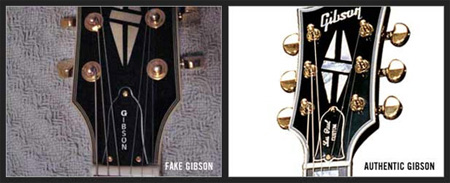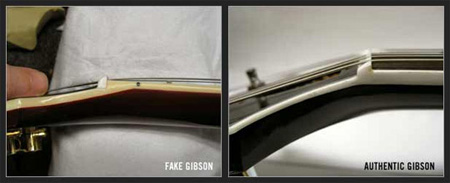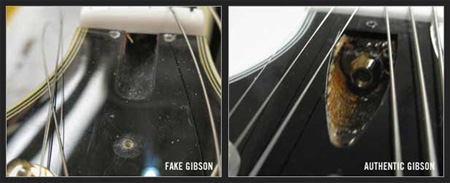
Gibson guitars are synonymous with quality, beauty and are desired by collectors and musicians the world over. The Les Paul, in particular, has aided in the creation of the modern music scene that we know today. However, this makes them expensive in their own right. They are constructed with the finest tone woods and are still very much hand crafted.
As the Gibson Les Paul is a highly valued guitar, many people will try to make fakes that will sell for far more than they are worth. Here are a few ways to help see these fakes. These knockoffs will not get past the experienced players, but they will be able to trap those who are not familiar with guitars. These instruments normally cost from two thousand to three thousand. So if they are offered for a few hundred then they are likely to be fakes.
If any seller is based out of China or another Asian country, then be careful. None of Gibson’s instruments are made in these places. All Gibson guitars are made in the United States of America. In general, be wary of second-hand online marketplaces like eBay where pirated goods could circulate. If you wish to purchase a Gibson Les Paul online, buy it from a respectable store such as Zzsounds.
Be aware of the common body shapes used by Gibson, and check those that you are looking to buy. Most of the fakes have a Gibson logo that is of a thicker font than the real Gibson logo and is aligned almost horizontally at the top of the headstock. The real Gibson logo is a thinner font and is angled with the G started near the post of the D string tuner. The real key is to look at the truss rod cover. Real Gibsons have a bell shaped truss rod cover with TWO screws, whereask fakes typically have THREE screws. Also, the copies of Les Paul Standards often say “Gibson” right on the truss rod cover, NO Les Pauls say Gibson on the truss rod cover, some Epiphone Les Pauls do but those aren’t made in the USA and say Epiphone at the top of the headstock not Gibson.
| The fakes will normally be imprinted with genuine appearing serial numbers. However, they will normally not line up with the production years of the real Gibson guitars. On the custom shop Historic and VOS Les Paul guitars, the logo is silk-screened where the fakes use decals.
All well made real Les Paul guitars will come with original Gibson cases. These cases are as well made as the guitar itself many times. If there is not a case included in the sale, or if the seller offers to use a case other than the original Gibson case, then that could be a warning sign. Maybe the easiest way to check is to ask the seller. Many will tell you that they are made in China. As stated already, not a single Gibson is made in China. All those that claim to be from there are fakes. A Gibson Les Paul is an expensive buy and as such should be treated carefully. As it is a large investment to get such a fine instrument, be sure to go to a seller with a good reputation, preferably an online retailer with a solid history of selling real Gibson guitars. To ensure the authenticity of a Gibson, consumers can check any of the references below when examining a guitar:
|






Via LesPaulGuide and Gibson.com
